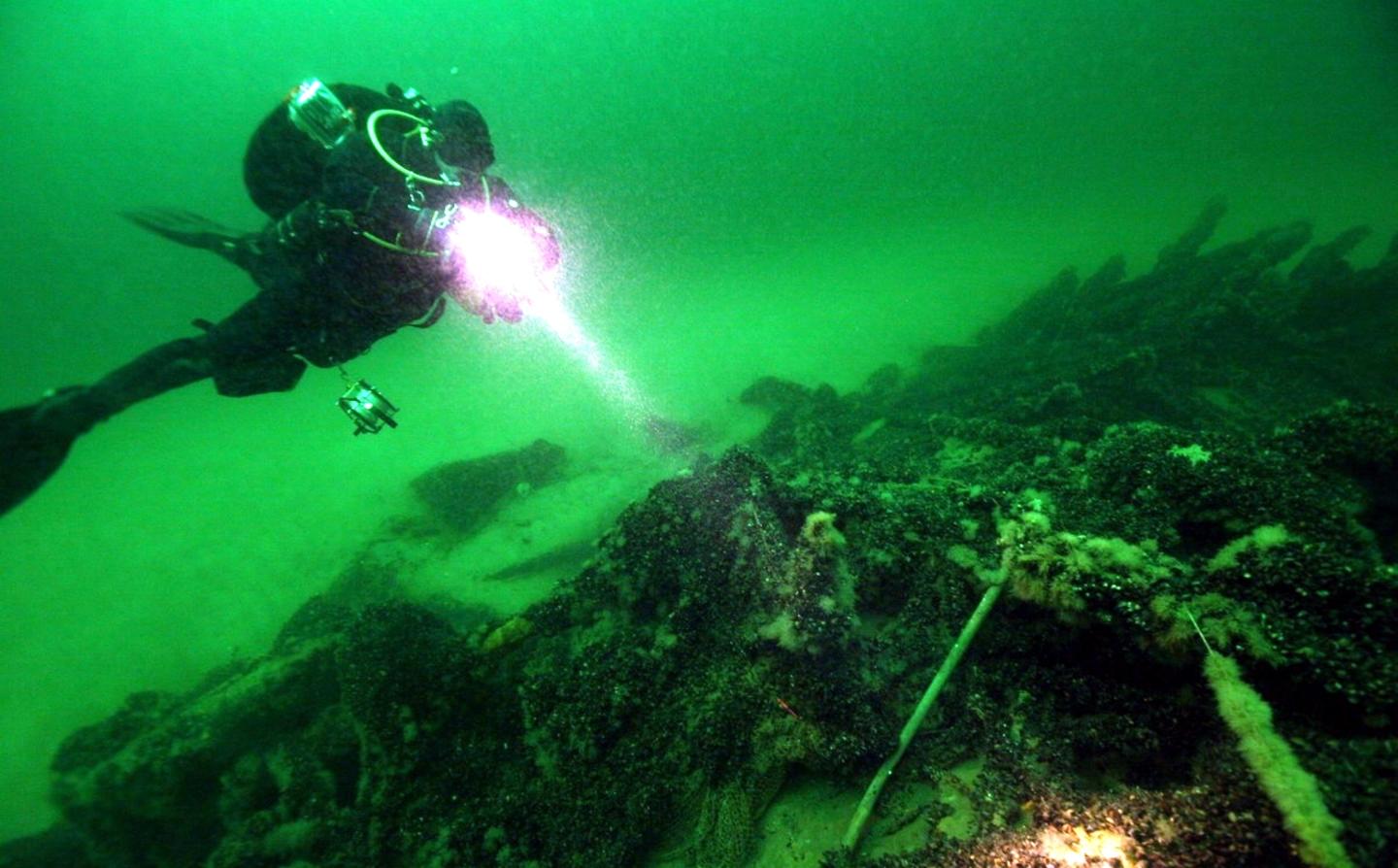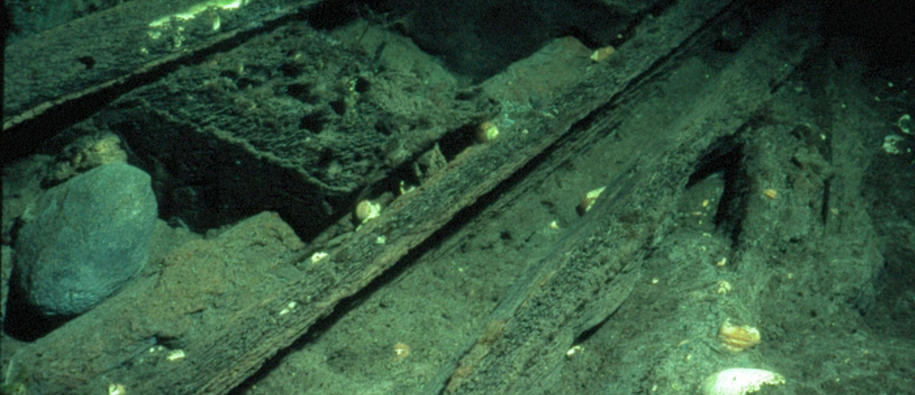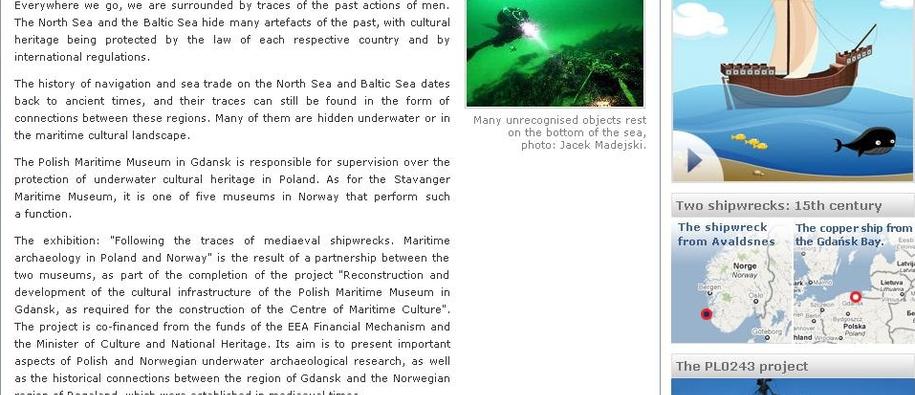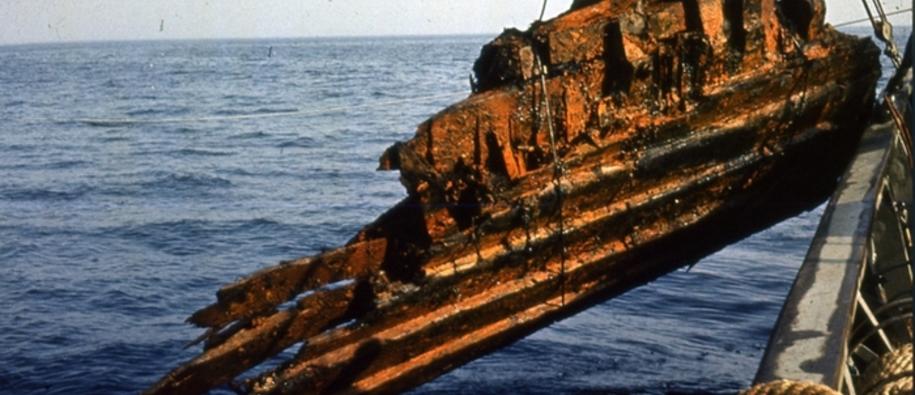In the medieval harbour off Avaldsnes in Karmøy, on the south-west coast of Norway, a 22 metre shipwreck from Gdánsk, home to the Hansaetic league in the Middle Ages, lies buried in mud. Having spent 600 years on the bottom of the sea, the ship is reduced to rotten ribs and planks partly sticking up from the sea bed. But, nevertheless, “very exiting”, according to marine archeologist Endre Elvestad of the Stavanger Maritime Museum. “Not only have we found such a ship off the coast of Avaldsnes, but a similar shipwreck has been found in the bay of Gdánsk in Poland.”
www.2wrecks.eu
Curator Anne Tove Austbø of the Stavanger Maritime Museum compares the traces of historic connections in Northern Europe in the Middle Ages to a fine cobweb cast over the region. “Our aim is to showcase the close and longstanding contacts between our two regions – Rogaland and Gdánsk,” says Austbø. “We are part of the same history of trade, exchanges and shipping across the Baltic Sea. Large parts of the Hanseatic culture is still untold and the underwater cultural heritage can reveal parts of this history.”
Sunken shipwrecks disclose Hansa history
The sheltered waters at Avaldsnes, harbouring the sunken shipwreck over the centuries, were also once a strategic asset – both for the Norwegian kings and for the Hansa. To avoid the fierce Atlantic storms, ships would pass up and down the Norwegian coast along the more protected ‘Nordvegen’, the North Way, with Avaldsnes situated at the narrowest part of this fairway – enabling the ones in power of the harbour to control the shipping traffic and the trade with Europe.
“At one point during the 15th century, a ship sailed to the Norwegian west coast, and sank in the harbour of Avaldsnes after having caught fire. An analysis of the building timber indicates that the ship was built in the Gdańsk or Elbląg area, around 1395,” Elvestad says. Its counterpart on the sea bed off the Polish coast had an equally unfortunate fate. After barely having sailed out of the port of Gdánsk, the ship caught fire and sunk in 1408 – only to be discovered 16 years ago by the Polish navy.
"The rich collection of cargo from the remains of the Polish "Copper Ship" found in the Gdánsk Bay, is an unique contribution to the understanding of the hanseatic trade routes” says Austbø. "Due to the favourable preservation conditions of objects in the Baltic Sea, the state of preservation of these objects after 600 years at the bottom of the sea, is remarkable.This exhibition is an excellent way of presenting the finds and research internationally."
The chosen building techniques of the ships indicate nevertheless that the historic connections go further back than the Middle Ages. While originating from shipyards in Poland, the ships combine shipbuilding traditions from Scandinavia and those of the Hansa of the Baltic Sea. “No one really knows, but it’s possible that the ship builders around the Baltic Sea picked up on tricks from the Vikings,” says Elvestad.
A cannonball hidden in medieval rubbish
But there is more in the depths of Avaldsnes harbour that may unlock history. Next to the shipwreck, a medieval rubbish site dates back to a period of turf wars and power struggles between the Norwegian King Håkon V Magnusson and the Hansa.
In December last year, during the coldest week before Christmas, Elvestad decided to dig into the muddy sea bottom to have a closer look at this medieval rubbish. “I found a one metre thick layer of slaughtered remains of pigs, sheep and cows. I was digging through lots and lots of old, gross bones,” Elvestad says, laughing. While pieces of the historic heritage hidden deep at sea may often be tricky to read, the bones testify to large-scale human activity in the harbour during the 15th century.
Sources indicate that Avaldsnes was one of the Hansa’s trading stations, which could explain why the shipwreck from Gdánsk, the central point for the Hansaetic network in Northern Europe, ended up in its harbour. But towards the end of the 14th century, the Norwegian king introduced protectionist measures to reduce the Hansa’s stronghold on trade, prompting Hansaetic wrath.
The Hansa raided and burned the king’s and his subject’s farms and houses in the coastal stretch between the Swedish border all the way to Bergen, and, not surprisingly, eventually saw their trading rights restored. This is also the time when the traces of the Hansa at Avaldsnes become evident. Instead of burning down the royal estate at Avaldsnes, however, the Hansa seem to have taken over control of the harbour and stayed in power for about 150 years.
This leads us back to the bones and Elvestad. “Avaldsnes was not a town at the time, so the large amount of animal waste suggest that there were perhaps Hansaetic settlements here or maybe the animals were meant for trade?”, he says, stressing the potential of underwater cultural heritage to deepen our knowledge of history. “It may sound odd – but I would much rather find animal bones than gold.”
International marine archeology
Krystyna Stubińska of the Polish Maritime Museum says the presentation of sunken vessels and their contents have to be within the framework of the international connections of which they formed a part. “We want to show Polish people the importance of the Baltic Sea – how ship building changes through influences from abroad and the trade connections between our countries over the centuries,” she says. The importance of seeing the marine archaeological findings in their international context is echoed by Elvestad. He says the benefit of the Polish-Norwegian project has been to elevate the archaeology beyond the national perspective. “Norwegian archaeology has been somewhat navel gazing at times. What is exiting is when we start looking at the connections and see that the networks go far beyond Norway’s borders.”
Redevelopment of the Polish Maritime Museum
The online exhibition is part of a comprehensive project aimed at redeveloping part of the Polish Maritime Museum. A €8.6 million investment from the EEA Grants is financed the construction of a new building that will host exhibitions of the marine cultural heritage of the region, scheduled to open this year.




